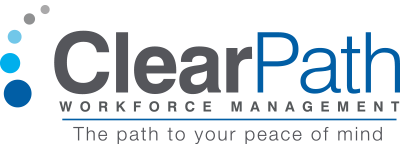It’s difficult to be in a Human Resources (HR) role and keep up these days. Local, state and federal laws change frequently, and technology and social issues are constantly evolving, all impacting today’s workforce. Year after year, companies struggle to stay abreast of the latest employment laws, employer regulations, and trending workplace issues. 2019 has been no different. As we prepare for the new year ahead in 2020, ClearPath recaps six employment issues that have been significant in 2019:
- Sexual Harassment Training Laws
- Wage and Hour Law: New FLSA Guidance
- Independent Contractors – AB5
- Marijuana in the Workplace
- Paid Sick Leave Laws
- Minimum Wage Laws
Sexual Harassment Training Laws
All employers in the state of New York and California are now required to provide sexual harassment prevention training to all employees in both supervisory and non-supervisory positions. Employers in New York must have completed the training by October 9, 2019, while employers in California now have until January 1, 2021. The trainings will need to be state-specific, as each state, and possibly city, has its own content requirements. Other states with mandated harassment training are Connecticut, Delaware, Illinois, and Maine. ClearPath provides sexual harassment training to our contingent workers and helps you stay compliant with these laws. We have created a cheat-sheet matrix with all the details for all the states. If you would like to receive a copy, please download it here.Wage and Hour Law: New FLSA Guidance
Recently, the Federal Department of Labor (DOL) revised the regulations issued under the Fair Labor Standards Act (FLSA) to allow workers to become entitled to overtime. The DOL updated the earnings thresholds necessary to exempt executive, administrative, or professional employees from the FLSA’s minimum wage and overtime pay requirements. The key provisions of the new rule are:- Raising the “standard salary level” from the currently enforced level of $455 to $684 per week (equivalent to $35,568 per year for a full-year worker);
- Raising the total annual compensation level for “highly compensated employees (HCEs)” from $100,000 to $107,432 per year;
- Allowing employers to use nondiscretionary bonuses and incentive payments (including commissions) that are paid at least annually to satisfy up to 10 percent of the standard salary level, in recognition of evolving pay practices.
Independent Contractors – AB5
It is becoming more difficult to be classified as an Independent Contractor. Recently, Assembly Bill 5 (AB5), authored by Assemblywoman Lorena Gonzalez, was signed into law mid-September by California Governor Gavin Newsom. The bill will reclassify independent contractors to employee status. Under AB5, workers will have to be assigned to tasks outside of the business’s usual work course, not integral to the business, and be free from the control and direction of the hiring entity. These two factors alone will impact the business model of ridesharing companies like Uber and Lyft. Many rideshare drivers are not happy with what the changes could mean for them. Other states are looking at similar legislation.Marijuana in the Workplace
The legalization of cannabis or marijuana is transpiring across the U.S., whether for recreational or medical use. It may seem hard to comprehend but, in 2019, marijuana is legal for medical use in 34 states and the District of Columbia. The District of Columbia and 11 states — Alaska, California, Colorado, Illinois, Maine, Massachusetts, Michigan, Nevada, Oregon, Vermont, and Washington — have adopted the most expansive laws legalizing marijuana for recreational use. Legalization efforts have not slowed, and marijuana use in the United States continues to increase along with it. Despite the widespread wave of marijuana legalization in the United States, marijuana remains an illegal drug federally. Thus, marijuana inhabits an in-between zone of legality: legal and illegal at the same time. But while the federal government has generally chosen not to prosecute those who possess and distribute marijuana when in compliance with state laws, it also does not budge on treating marijuana as an illegal drug for purposes of oversight, distribution, federal disability law protection, etc. Federal requirements for drug-free workplaces still require that employees test negative for marijuana along with other illegal drugs.Paid Sick Leave Laws
Although paid sick leave is not generally required under federal law, it may be required under state or local law. In the absence of federal law, an increasing number of states, counties, and municipalities have chosen to adopt a paid sick leave law. When an employer operates or has employees in a jurisdiction that requires paid sick leave, they need to carefully check the state and local law’s requirements. Over the last several years, many states, cities, and counties have passed and put into law Paid Sick Leave ordinances. While this is a great benefit for the employee, it is making it harder and more complicated to be an employer. For employers that operate in multiple locations that have paid sick leave laws, this can be a daunting task, as each law has its own standards regarding which employees are covered, which employers must comply, how employers must comply, and more. While many of the paid sick leave laws have common requirements, they all have unique provisions. An employer must figure out if and how the laws interact with each other (and in some cases, other laws) and adjust business practices accordingly. An employer must also keep abreast of amendments to the laws and relevant government regulations. To assist with this, ClearPath has created a free Cheat Sheet outlining the current Paid Sick Leave ordinances. 2020 cheat sheets to be released shortly.Minimum Wage Laws
Keeping up with changes to the Minimum Wage rates can make your head spin. Currently, the federal minimum wage is $7.25. States and cities across the country are passing their own minimum wage laws, requiring minimum wages above the federal level. The federal minimum wage has been stuck at $7.25 and has not seen an increase since 2009. The Raise the Wage Act of 2019 bill is in the first stage of the legislative process. It was introduced into Congress on January 16, 2019. It will typically be considered by committee next before it is possibly sent on to the House or Senate as a whole. If passed, it would gradually raise the federal minimum wage to $15 per hour by 2024. Employers need to ensure they are following the appropriate minimum wage ordinances to stay compliant. Semi-annually, ClearPath updates its Minimum Wage Cheat Sheet so you can stay current. To get a complete listing of city/state minimum wage requirements, click here. 2020 cheat sheets to be released shortly. Because keeping up with employment laws and regulations is crucial to your business, you should partner with a leader in workforce solutions. We can help you design a solution pertaining to your contingent workers, and relieve this burden by outsourcing your back-office Human Resources and Payroll functions to our Employer of Record service. Contact us to learn more about how our expert personalized service can let you get back to focusing on your business goals. Work with a leader in the industry for outsourced Human Resources and Payroll functions associated with W-2 and 1099 contingent workers. Let ClearPath be the path to your peace of mind. For other questions about assessing your workforce or conducting a review of your current hiring processes, the ClearPath team can assist you. This blog article is for general information purposes only and does not provide an in-depth review of employment laws. It should not be solely relied upon or substituted for legal or professional advice. The use of the information provided is at your own risk.- Written by: Connie Wendt
- Posted on: December 4, 2019
- Tags: EMPLOYER OF RECORD SERVICE, ENGAGING W-2 WORKERS, FORM I-9, INDEPENDENT CONTRACTOR COMPLIANCE, MARIJUANA IN THE WORKPLACE, Minimum Wage, PAID SICK LEAVE, SEXUAL HARASSMENT TRAINING, W-2 Worker Classification, WAGE AND HOUR LAW, Workforce Classification

